#quintanares
Text
Quintana
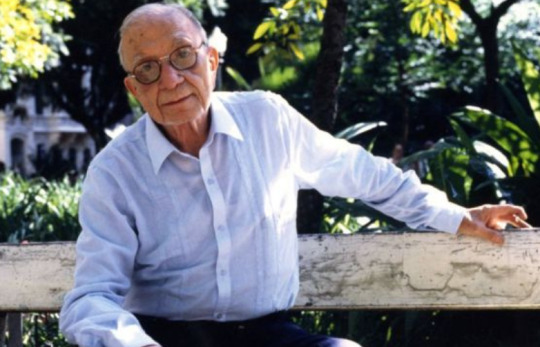
#Mario Quintana surgiu para a literatura contista#mas logo se deu conta de que possuía um talento natural para o verso. E essa sua qualidade como poeta ficaram evidentes quando publicou sua#A Rua dos Cataventos#em 1940. Ali#a tradição e a modernidade se juntaram em uma abordagem inovadora da métrica e do ritmo#e em seu desrespeito pela retórica e pelo artifício. Seus sonetos combinam um lirismo inato com uma intimidade coloquial que acabou se torn#a poesia de Quintana fez dele uma espécie de guru. Seus poemas transmitem verdade e humanidade#humor pungente e compaixão. O homem foi um poeta para todas as épocas e foi também#como descreveu de forma memorável um famoso escritor brasileiro: “um anjo disfarçado de homem”.#inovacao#quintanares#poeta
0 notes
Text

José Quintanar, A Dutch landscape of 26 days, Shower Gallery, Rotterdam, May 2020 [© José Quintanar]
237 notes
·
View notes
Text


José Quintanar
203 notes
·
View notes
Text


#fenomeno2#oscar raña#jose quintanar#roberto masso#maria medem#hugo bocanegra#ruben romero#andres magan#dunja jancovic#elisa victoria#nacho garcia#publicacion#self publication#handmade#fanzine
20 notes
·
View notes
Text
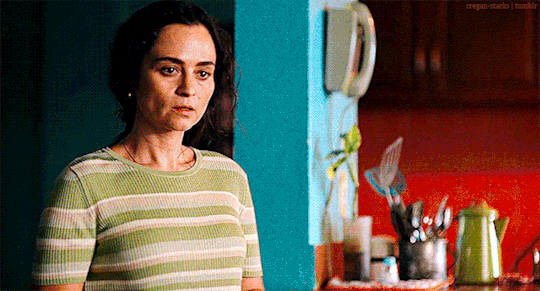
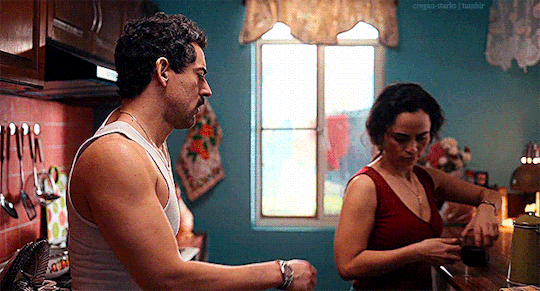
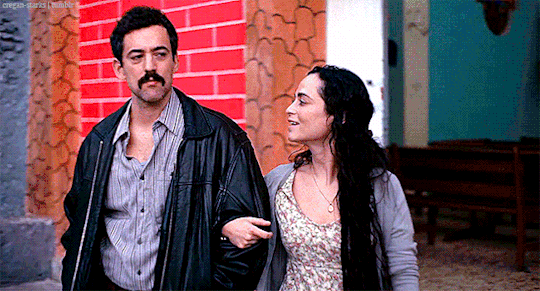






You look so handsome washing dishes! Should do it more often.
#forever sad about them#narcosedit#narcosmxedit#narcosmexicoedit#netflixedit#userbreslin#userfrodosam#maevemills#tw smoking#narcos mx#narcos: mexico#narcos mexico#victor tapia#tenci tapia#hortencia tapia#luis gerardo méndez#damayanti quintanar#original creations
16 notes
·
View notes
Photo

daphne lee photographed rehearsing as hazel scott in tiffany rea-fisher's sounds of hazel by diego quintanar
23 notes
·
View notes
Text
#RealDelMonte SE APOYA AL TURISMO CON MATERIALES AUDIOVISUALES
#RealDelMonte
SE APOYA AL #TURISMO CON
MATERIALES AUDIOVISUALES

View On WordPress
0 notes
Text
instagram
#Instagram#Nuestras oficinas. En Av. Reyes Católicos#16#45800 Quintanar de la Orden#Toledo. @fpinnovacion
0 notes
Text
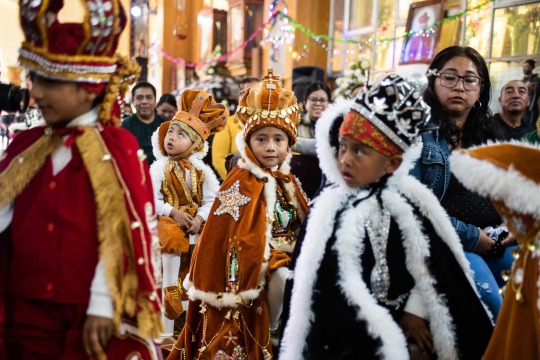
January 7, 2024: Miahuatlán, Mexico
Children take part in the traditional Three Wise Men parade
Photograph: Hector AD Quintanar/Getty Images
31 notes
·
View notes
Text
In 1516, the Fifth Lateran Council reserved to "the Apostolic seat" the right to examine the authenticity of apparitions. For poor peasants whose visions had no political content, the punishments fell short of the ultimate severity. The Marian apparition seen by Francisca la Brava, a young mother, was described by Licenciado Mariana, the Lord Inquisitor, as "to the detriment of our holy Catholic faith and the diminution of its authority." Her apparition "was all vanity and frivolity." "By rights we could have treated her more rigorously," the Inquisitor continued.
"But in deference to certain just reasons that move us to mitigate the rigour of the sentences we decree as a punishment to Francisca la Brava and an example to others not to attempt similar things that we condemn her to be put on an ass and given one hundred lashes in public through the accustomed streets of Belmonte naked from the waist up, and the same number in the town of El Quintanar in the same manner. And that from now on she not say or affirm in public or secretly by word or insinuation the things she said in her confessions or else she will be prosecuted as an impenitent and one who does not believe in or agree with what is in our holy Catholic faith."
— The Demon-Haunted World: Science as a Candle in the Dark - Carl Sagan (1996)
#The Demon Haunted World#Carl Sagan#Science As A Candle in the Dark#books#book quotes#quotes#science#nonfiction#philosophy#religion#history#skepticism#atheism#agnostic#psychology#atypicalreads#physics#astrology#papa sagan#popular science#pseudoscience#1990s#1996#catholic
2 notes
·
View notes
Text
The rumble of explosions sounds in the distance on a desolate street in Kostiantynivka. Once a residential area, many of the houses here bear the marks of war, from windows boarded up with wooden planks to roofs caved in by missile strikes.
Few people walk down the asphalt road, and many who once lived here have fled the area. In a one-story house on the street, Nadiya, 34, holds her one-year-old daughter in her arms, bouncing her up and down and cooing to soothe the baby, who has just begun crying. Dressed in a white robe covered with brightly-colored unicorns, her short brown hair pinned back in clips, Nadiya sits on the couch next to her five-year-old daughter, who’s chewing on a blue balloon.
A single mother living near the frontlines, Nadiya also has two other children, girls ages eight and twelve. She knows the fighting is creeping closer to Kostiantynivka, yet Nadiya stays — not because she wants to but because she has nowhere else to go. Nadiya has very little money and just two aging family members to rely on for help raising her children.
Like other mothers in Kostiantynivka, Nadiya says that she has her family’s suitcases packed, in case they must flee their home abruptly. But past attempts to find a new place to live ended with realtors telling Nadiya that nobody would rent to a family with so many children. With limited resources and few options for keeping her family safe, Nadiya feels she’s at a crossroads — caught between the hope that Ukraine’s military can fight off Russian advances and the fear that, in the end, she’ll be left with no option but to flee for the sake of her children.
Like Nadiya, the other mothers interviewed for this story asked to be identified by their first names only.
‘The children weren’t sleeping at night’
Russian aggression has shaped life in Kostiantynivka for the past decade. In April 2014, Russian proxy forces from the self-proclaimed Donetsk People’s Republic seized control of Kostiantynivka’s town hall and later the city itself. Ukrainian forces retook Kostiantynivka that July, but the lingering effects of the invasion remained. The frontline became frozen in place just 18 kilometers (11 miles) away, cleaving eastern Ukraine between government-controlled and occupied territories. The eight years of war that followed killed more than 14,000 people and left more than a million others internally displaced.
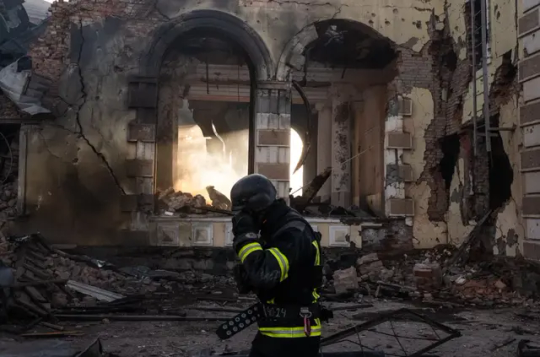
Firefighters battle a blaze caused by a Russian strike on the train station in Kostiantynivka. February 25, 2024.
Hector Adolfo Quintanar Perez / ZUMA Press Wire / Scanpix / LETA
After Russian President Vladimir Putin sent troops into Ukraine in a full-scale invasion in February 2022, more than 1.2 million people, or two-thirds of the population, fled their homes in the Ukrainian-controlled areas of the Donetsk region. Those who remained in wartorn Donbas were often the elderly, sick, or those with nowhere else to go — like Nadiya and her four children.
Nadiya is separated from her husband, who she says had a drinking problem. He moved to Poland to look for work before Russia’s February 2022 invasion, leaving Nadiya to raise their three daughters on her own. When the full-scale war began, Nadiya and her children were living on the outskirts of Kostiantynivka near Bakhmut, a city that would soon see one of the longest and bloodiest battles of the war.
Nadiya describes the early days of the full-scale invasion as “gray and scary.” “They weren’t giving out humanitarian aid yet, and people were panicking. Everyone was buying up food. Some people were leaving, others were arriving. It was hard,” she recalls.
As the war raged on, Nadiya found herself in a new relationship and became pregnant with her fourth child. “When I found out that I was pregnant, I had a lot of [different] thoughts on the matter. Naturally, I was afraid of what would happen next. All the gynecologists had left the city,” Nadiya explains as she holds her baby. “But having thought about everything and weighed it, I decided that if this happened, then, apparently, it was all for a reason,” she adds.
Nadiya’s street came under direct shelling shortly after she was discharged from the maternity ward. “My whole life flashed before my eyes,” she says. “After that, we decided we couldn’t continue like this because the children weren’t sleeping at night.” The mother decided to move her family to the small house where they live now, which belongs to her grandmother. The situation in this part of Kostiantynivka “has more or less stabilized,” she says, and her children are no longer too scared to sleep. But Nadiya struggles to support her family financially.
Since she and her husband never divorced, she isn’t eligible for government assistance for single mothers. And her new partner is currently in the hospital following an accident that left him with a permanent disability. She herself is unable to work, given the number of children in her care, and so her family lives in extreme poverty. According to Nadiya, her main source of income is the 860 hryvnias ($22) in social assistance she receives each month as the mother of a newborn.
The war has left 2.92 million Ukrainian children in urgent need of assistance, according to UNICEF. An estimated 493,000 children are living along the 1,000-kilometer (620-mile) frontline that runs through the south and east and in occupied areas of Ukraine, where they constantly face “intense shelling, damaged housing infrastructure, and severe constraints to their basic needs.” A UNICEF survey also found that 41 percent of mothers in frontline communities feel unsafe in their current locations.
UNICEF reports that the war has caused a “poverty shift” in Ukraine, with relatively well-off households suddenly falling below the poverty line and groups considered “traditionally vulnerable” (such as families with three or more children, children under the age of three, and single parents) falling under the extreme poverty line. A UNICEF survey of 9,000 Ukrainian mothers found that 59 percent reported receiving no social assistance for their children, while 57 percent said financial assistance is their most critical need.

People wait for a Kyiv-bound train on the platform in Kostiantynivka. February 24, 2022.
Vadim Ghirda / AP / Scanpix / LETA
Nadiya says international organizations, including the Norwegian Refugee Council and UNICEF, have supported her family on several occasions. “Of course, it helps a lot. But the money runs out very quickly.”
Lack of funds has also made it impossible for Nadiya to relocate her family to a relatively safer part of Ukraine. Nadiya says she started to inquire about moving to Odesa after her fourth child was born, but multiple realtors told her variations of the same thing: “You guys are crazy. Who will let you rent an apartment with four children? It’s just suicide. Four children means a destroyed apartment in a month.”
‘I don’t know where there’s a safe place’
At the local recreation center, children run around laughing with one another, but explosions can be heard drawing nearer outside of the building. The parents and children carry on with their day as if nothing has happened because they are used to the sounds of attacks.
Olena, 35, is the mother of two boys aged six and ten. The family remained in Kostiantynivka throughout the full-scale war. But Olena says she was much more optimistic about the future before Avdiivka fell to Russian forces. Located 70 kilometers (43 miles) from Kostiantynivka, Avdiivka was the epicenter of the war for months. Ukrainian Commander-in-Chief Oleksandr Syrskyi announced that Ukrainian troops had pulled out of the city on February 17, marking the first significant win for Russia since its forces captured Bakhmut last spring. “We were in shock, and [now] we don’t know what to do next,” Olena says.
As she talks about life in Kostiantynivka, Olena begins to cry. She and her husband were forced to leave their home in Donetsk in 2014 after the city fell under Russian occupation, and they have lived in Kostiantynivka for 10 years. “I’m crying because I understand that [the frontline is getting] closer and closer, and I have to move. But where? I don’t know,” Olena says.
Olena has taken in an array of animals during the war, ranging from geese to dogs, many of which had been abandoned by families who fled the city. She refuses to leave behind all of her pets but acknowledges that it would be difficult to find a new home with them in tow. At the same time, Olena says everywhere she could move in Ukraine would also be dangerous. She has relatives in a small village outside of Uman, in central Ukraine, but according to Olena, people there are less than welcoming to displaced compatriots. “They didn’t say not [to] come, but I understand they don’t want us there,” she explains.
“I know many cases when people moved and [then] they were bombed, or their houses were destroyed. They were stressed, and they came home again,” she adds. “I don’t know where there’s a safe place.”
Olena also worries that if her family were to leave Kostiantynivka, her children might have to go to school in person, where they could be targeted in a Russian attack. (According to Ukraine’s education minister, more than 3,900 educational facilities have been damaged or destroyed during the full-scale war.) “As a mom, I’m afraid for my children,” Olena says. “I understand that [if] we move from Kostiantynivka and live in a ‘normal’ city, I’ll be afraid of what [might] happen when my children go to school. Online education is the better way for me.”
Another mother named Halyna, 38, sits on a black couch, speaking about her three children. “You begin to see all of this [motherhood] differently. All of your goals, your perception of time, and your use of it,” she says when asked what it’s like to be a mother in wartime.
A single parent who works as a corporate lawyer, Halyna has kept her family in Kostiantynivka throughout the war. “I didn’t go abroad because I understood perfectly that I couldn’t practice my profession there,” she explains. “I have friends in Germany, but I didn’t want to work as a cleaner. I’m not ready to live like many people, just receiving benefits; it’s against my life principles.”
Halyna says she would leave if her children were afraid. Still, she says she believes there’s a “very high risk” that Kostiantynivka will be occupied soon. In that case, she and her family will “definitely” leave. They have already packed their bags: “My whole life is [in] there, absolutely everything. There are personal belongings, dishes — everything that has some value to me.”
Halyna says her family would most likely move to Dnipro, a city 240 kilometers (143 miles) west. She could continue working remotely from there. “Responsibility is the most difficult thing,” she reflects. “Not just the sense of responsibility for yourself but for [your children’s] lives and health, and making the right choice.”
‘A worthy example’
Responsibility is a topic that all parents in Ukraine have to grapple with in wartime. They must decide when to stay put and when to leave everything behind, taking away what little sense of routine and security their children still have.
In the most extreme cases, however, the Ukrainian authorities are the ones making that call. The Cabinet of Ministers approved a mechanism for the mandatory evacuation of children from active combat zones in March 2023. At the time, the only area that met the criteria for forced evacuations was Bakhmut, but the authorities have since called for families with children to evacuate from other frontline settlements, like those in the Kharkiv region’s Kupyansk district.

Ukrainian officers prepare a child wearing a ballistic vest for evacuation from Bakhmut. March 31, 2023.
Oleksandr Ratushniak / Reuters / Scanpix / LETA
According to Shelly Whitman, the executive director of the Dallaire Institute for Children, Peace, and Security, there is a dearth of international guidelines on how governments — not to mention parents themselves — should handle evacuations of children in such scenarios.
“In essence, the Ukrainians are having to make up [criteria] on their own at the moment,” she told The Beet. “There are no clear guidelines in any of the international child protection laws.” As Whitman pointed out, decisions on evacuations are complex: Telling civilians to flee an active combat zone is one thing, but whether they have the resources to leave, a safe route out, and a place to go are all separate questions.
On March 18, local authorities reported that all families with children had been evacuated from Chasiv Yar, a town just 20 kilometers (12.4 miles) from Kostiantynivka. But they have yet to carry out evacuations in Kostiantynivka itself. When a mandatory evacuation order is announced, parents or guardians do not have the right to refuse; they must accompany their children or entrust another relative to do so. Refusal to evacuate a child can be deemed a misdemeanor, punishable by a fine, or a criminal offense, punishable by up to five years in prison, according to the aid group Donbas SOS.
Back at Nadiya’s house, her eldest daughter takes the baby, who is still crying. At just 12, she helps her mother care for her younger siblings and with everyday tasks like cooking. But she still has schoolwork to do and is struggling with online classes. “Half of her school friends are [still] here because most people are unable to leave,” Nadiya says, explaining that the children sometimes “meet up” virtually.
With Kostiantynivka still under fire regularly, Nadiya says her family “operates according to the rule of two walls,” hiding in the corridor to avoid windows that could shatter from shock waves. The nearest basement where they could shelter in case of nearby shelling is located outside the house, under a summer kitchen, so “you still need to run to it,” Nadiya explains. “Everything is scary here right now,” she says. “It is impossible to get used to this, but somehow we already [did].”
Well aware of the dangers of staying, Nadiya admits that her family is “preparing for the worst” and bracing for the possibility of having no choice but to evacuate. “We will stay until the last moment, for as long as we can. Then, of course, we won’t put the children at risk. We’ll see if we have to leave. Of course, it’s scary. We are very afraid.”
For now, Nadiya hopes for peace to come as soon as possible and for “people around the world to learn how to forgive each other and resolve conflicts peacefully.” Until then, she tries to instill strength in her children every day. “I understand that I need to live for them,” she says. “I need to be strong for them. And even if there’s a weak spot, I need to hide it somewhere inside myself, so that the children understand that I am a worthy example.”
3 notes
·
View notes
Text

José Quintanar, The Shortest distance between two ideas, Ruja Press, Rotterdam, 2018 [© José Quintanar]




Details: 16 pages, Color Inkjet, 20x27cm, Biotop 120gr., Paperback, Staple Bound
126 notes
·
View notes
Photo

¡LETRA DEL AÑO 2023! ♥️♠️🗿🌈🌪️ Se realizaron todas y cada una de las ceremonias previas para la letra del año. Por este medio se informa que una vez realizando la consulta de adivinación, ifa nos da el Odu que rige para nuestra nación siendo este el sagrado Odu de Otrupon Owonrin, siendo el orisa regente para la nación de México Elegbara y la divinidad acompañante Oya. La bandera será rojo y negro al centro con el ribete de los colores correspondientes, sin mas por el momento se subirá una explicación detallada realizada por los ministros de la iglesia para el pueblo de México. OLODUMARE GBEWAO. ATENTAMENTE MARCELO CANACASCO OGBE ATE BRANDON QUINTANAR IRETE ALAJE ALEJANDRO QUINTANAR OSA OSHE HÉCTOR CARDENAS IRETE LAZO Fuente: Sociedad Yorùbá de México CETEM #letradelaño2023 #paramexico #orishas #eshu #eleggua #oggún #oshun #Yemayá #obatala #shango #oyá #espiritismo #palomonte #Ifá #puebla #loscabos #mexico #chiapas #tlaxcala #guadalajara #españa #chile #perú #estadosunidosdenorteamerica #miami https://www.instagram.com/p/Cm6J7BVONtT/?igshid=NGJjMDIxMWI=
#letradelaño2023#paramexico#orishas#eshu#eleggua#oggún#oshun#yemayá#obatala#shango#oyá#espiritismo#palomonte#ifá#puebla#loscabos#mexico#chiapas#tlaxcala#guadalajara#españa#chile#perú#estadosunidosdenorteamerica#miami
17 notes
·
View notes
Text


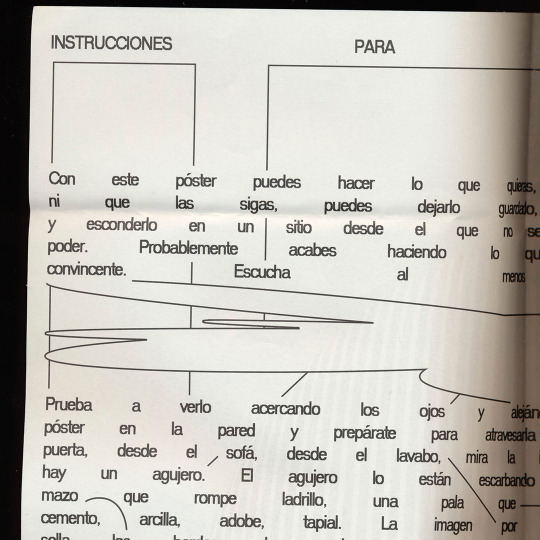


FENÓMENO #2
https://fenomenopress.bigcartel.com/product/fenomeno-2
VV.AA (Andrés Magán, Nacho García, Elisa Victoria, Dunja Janković, Hugo Espacio, José Quintanar, María Medem, Roberto Massó, Óscar Raña, Rubén Romero y Cynthia Alfonso).
6x Fanzines de 12 páginas cada uno.
Tamaño A4 - Blanco y negro - Papel clairefontaine trophee 80g - seis colores.
Caja cartulina gráfica 300g.
Póster tamaño A2 offset papel ahuesado 120g,color, impreso ambas caras.
+ Receta "fenomenú" A5.
Grapado, doblado y pegado a mano.
Impreso en Editorial Elvira.
__________
CAJA
Nacho García.
PÓSTER
Arte: Dunja Janković.
Texto: Elisa Victoria.
Diseño texto: Óscar Raña.
FENOMENÚ:
Hugo Espacio.
FANZINES
Amarillo: Óscar Raña.
Azul palo: José Quintanar.
Verde: Cynthia Alfonso.
Violeta: Andrés Magán.
Rosa: María Medem.
Naranja: Roberto Massó.
#fenomeno2#oscarraña#josequintanar#mariamedem#hugoespacio#robertomasso#andresmagan#cynthiaalfonso#rubenromero#elisavictoria#dunjajancovic#nachogarcia#comic#collective#fanzine#self publication
8 notes
·
View notes

